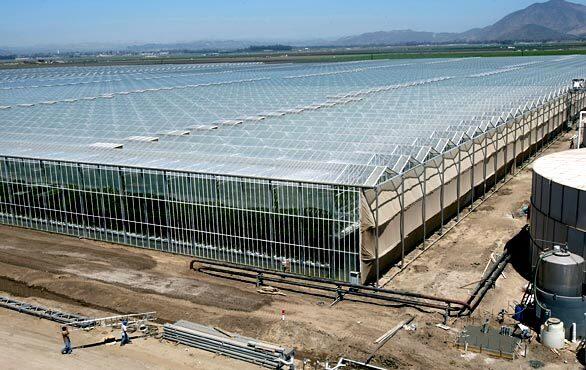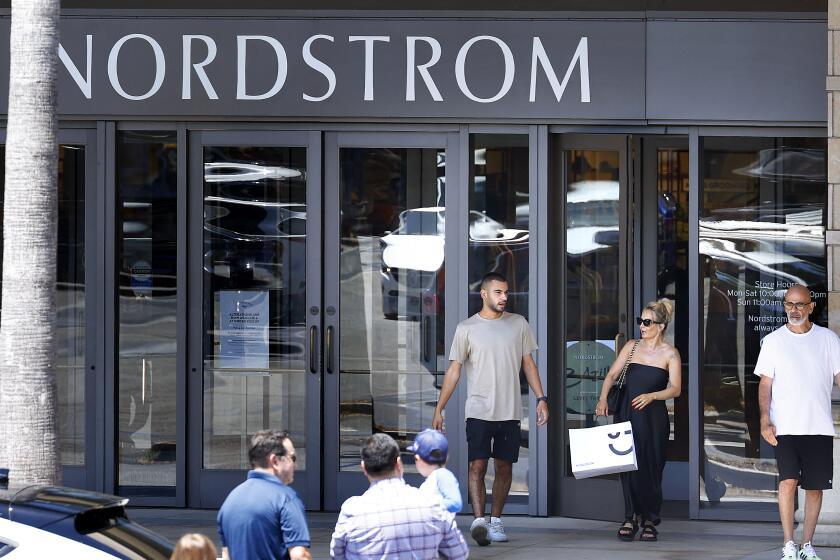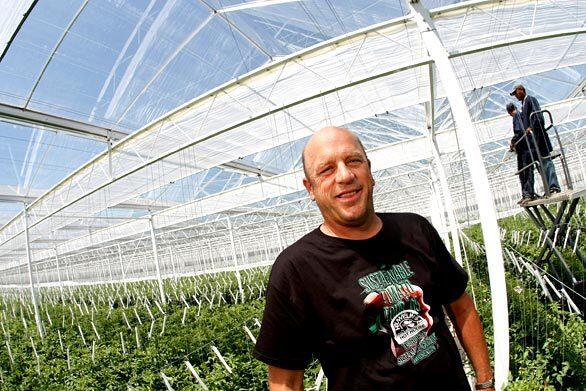
Casey Houweling, president of Houweling Nurseries, stands high above the crop in one of his new greenhouses, where pickers climb instead of stooping. (Anne Cusack / Los Angeles Times)
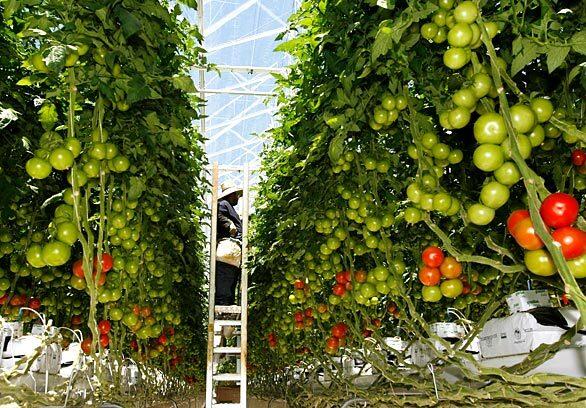
A worker clips a tomato vine to a string at Houweling Nurseries near Camarillo, where clusters of plump, sweet tomatoes hang from vines that reach high into the rafters. (Anne Cusack / Los Angeles Times)
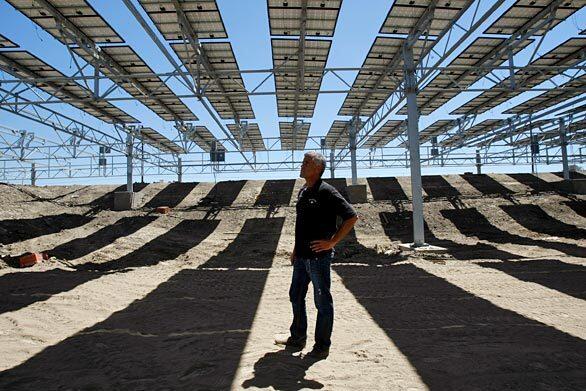
Public relations representative Rich Schineller stands beneath a solar field below which will be a 4-acre rainwater reservoir at the nurseries, where solar cells supply much of the electricity to run pumps and climate controls. (Anne Cusack / Los Angeles Times)
Advertisement
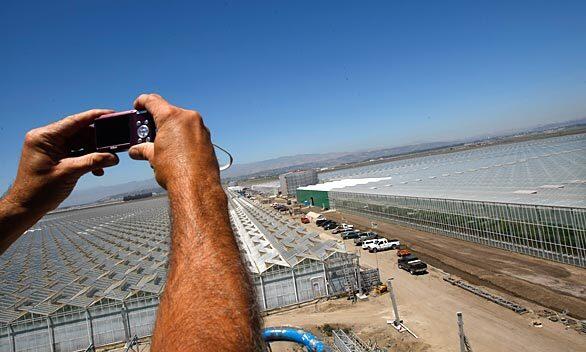
A Houweling Nurseries representative photographs a traditional hothouse, left, next to the more efficient design. (Anne Cusack / Los Angeles Times)
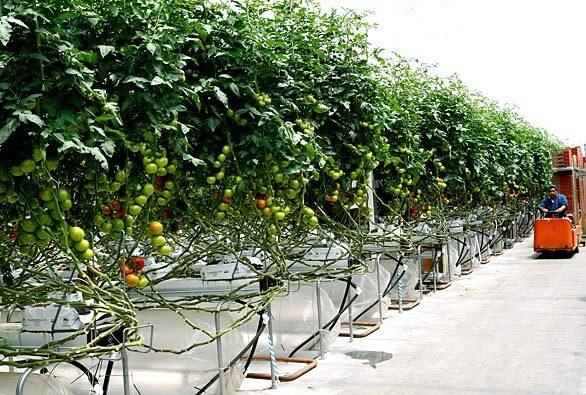
Some of the tomato plants are grown using hydroponics. (Anne Cusack / Los Angeles Times)
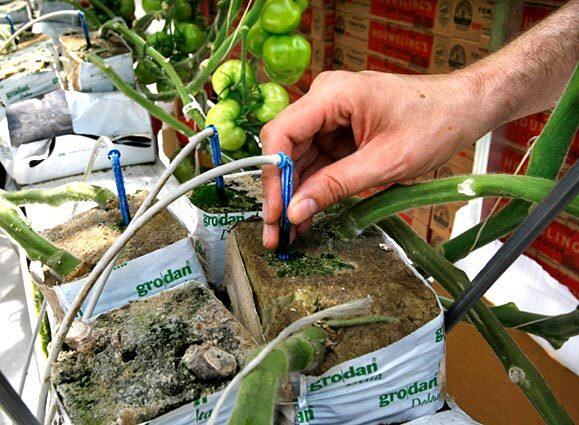
The tomato plants, which are fed individually through tubing, produce 20 times more fruit per acre than conventional field production. (Anne Cusack / Los Angeles Times)
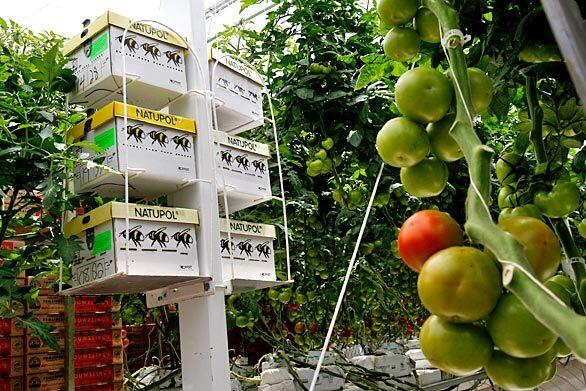
Bee boxes are placed every six rows to pollinate the tomatoes. (Anne Cusack / Los Angeles Times)
Advertisement
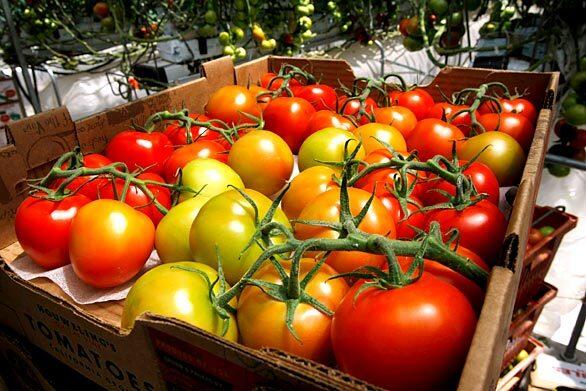
Tomatoes grown at one of the new Houweling hothouses, which require a fraction of the chemicals used in neighboring fields to coax plants to produce like champions. We are doing all of this not only because it will be good for our business but because it will be good for everyone else, said President Casey Houweling. (Anne Cusack / Los Angeles Times)
